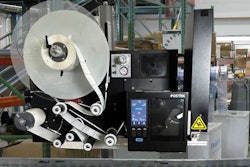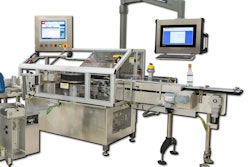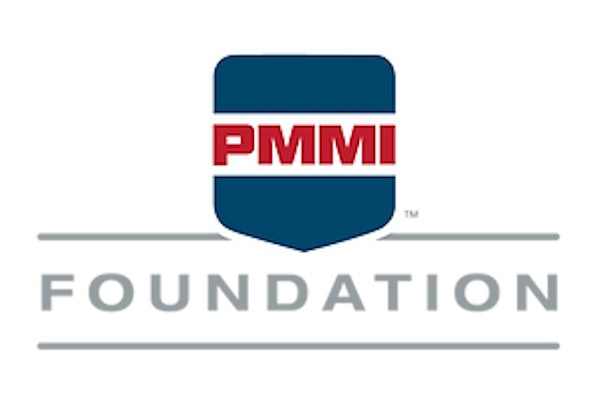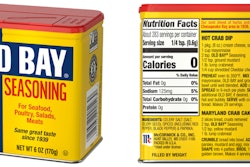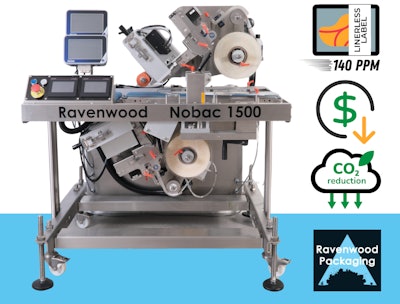
This content was written and submitted by the supplier. It has only been modified to comply with this publication’s space and style.
Ravenwood's Nobac 1500 linerless labelling machine offers a cost-efficient and high-speed alternative to standard self-adhesive top and/or base labellers.
Ravenwood, a global expert in linerless labelling and pack inspection, is supplying its new labeller as a standalone unit with an integrated conveyor. This applicator, designed for high-speed Modified Atmosphere Packaging (MAP) in the meat, fish, and fresh produce industries, is capable of printing and applying both top and base labels, or applying labels solely to the base.
Overall, the 1500 top and base labelling machine is an exceptionally cost-effective solution. Its air-free operation not only cuts down on energy costs but also minimises expenses related to wear and tear on components. The labeller has been fully tested to handle linerless materials that are 25% more economical on average compared to traditional self-adhesive labels.
Dave Mathison, Ravenwood’s Scotland and Ireland Sales Manager said: “The 1500 is exceptional because it operates without the need for compressed air and can handle lower gsm materials.”
Dave added: “We are continuously developing new materials, with a focus on further reducing costs, including those with improved water resistance.”
For standard MAP packs, the 1500 achieves faster labelling speeds, reaching up to 140 packs per minute. Rapid labelling is crucial for MAP in maintaining a steady supply chain. The meat and fish processing industry often operates at high volumes with stringent timelines and fast labelling is necessary to keep up with production speeds, avoiding bottlenecks and ensuring that the entire packaging line runs smoothly. Delays in labelling can hinder the entire operation across multiple food processing machines, resulting in inefficiencies.
Dave added: “The new labeller offers considerable CO2 savings and can be integrated with a weigh price labeller, optimising production throughput, efficiency, and flexibility for catchweight, fixed weight, or average weight labelling – ensuring products are retail-ready.”
The 1500, along with Ravenwood’s entire range of Nobac machinery not only provides faster labelling application speeds and significant cost savings but also delivers substantial CO2 reductions. Linerless labels adhere to themselves on the reel using corresponding strips of adhesive and silicone, eliminating the need for backing paper so reducing material consumption. Backing paper generated from self-adhesive label application is typically sent to landfill. Subsequently, linerless labels are classed as recyclable and mitigate these issues by eliminating the need for label liner altogether. Collectively, these factors contribute to environmental benefits and significant CO2 savings.
Try Ravenwood’s CO2 savings calculator for estimating potential carbon savings when comparing self-adhesive to linerless.

